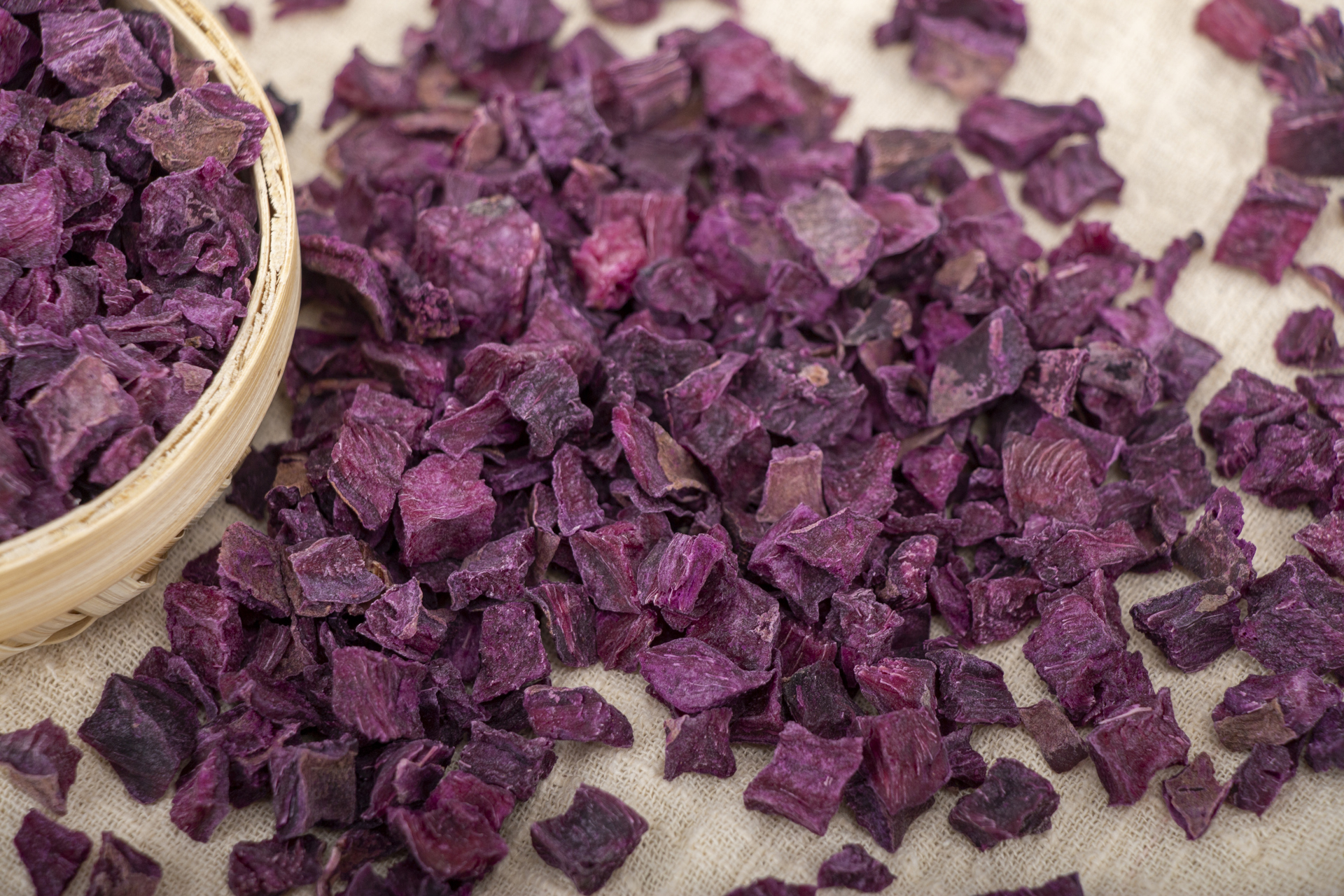- No.3 Beijing East Road, Laixi Economic Development Zone, Qingdao City, Shandong Province

| Moisture | ≤10% |
| Starch | ≥55% |
| Ash | ≤6.0% |
Purple sweet potatoes are typically processed into pet food ingredients through procedures such as cleaning, peeling (or leaving the skin on), cutting (into cubes / pieces / grains), drying or steaming followed by dehydration. During the processing, strict control of temperature and moisture is maintained to prevent the ingredients from spoiling and to minimize nutrient loss. Some production processes may also include steps such as impurity sorting and metal detection to ensure that the final products are free of foreign substances and meet microbial standards, conforming to the safety standards for pet food ingredients and suitable for large-scale production needs.
Purple sweet potatoes retain abundant natural nutrients and can be used as a functional supplementary raw material for pet food. They contain anthocyanins, which are a type of natural pigment and nutrient; they are also rich in dietary fiber, which helps promote pet intestinal peristalsis and maintain the normal function of the digestive system; they also contain B vitamins, vitamin C, potassium, iron and other minerals, which can provide basic nutrients necessary for pets' daily lives; their carbohydrates can serve as one of the energy sources for pet food, and are suitable for the nutritional needs of pets at different physiological stages.
Due to its unique properties, purple sweet potato can be widely incorporated into various pet foods. In pet dry food, purple sweet potato slices or grains can be evenly mixed with other ingredients to enhance the texture and flavor of the granules, and the natural purple color can also increase the visual recognition of the product. In wet food and canned food, purple sweet potato chunks can maintain their shape to prevent excessive softening, enriching the chewing experience of pets. In pet snacks or supplementary foods, it can be directly processed into dried purple potato strips or purple potato puree, which are suitable for functional pet food formulas without grains or low-allergen requirements, meeting different product design needs.